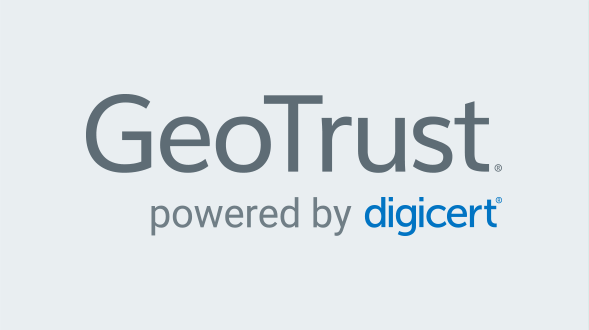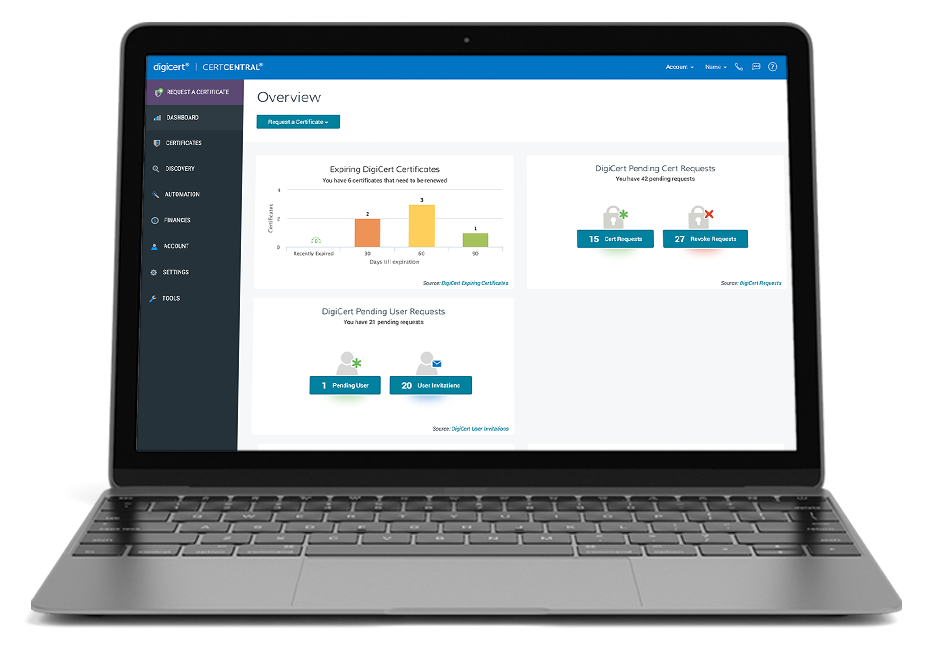
Secure your site with a trusted name
Choose the right certificate to protect your site with greater warranties, tools and support when you upgrade to a GeoTrust certificate.
Compare TLS/SSL Certificates
RapidSSL DV
RapidSSL Wildcard
GeoTrust DV
![]()
![]()
![]()
![]()
![]()
![]()
![]()


More support. Better warranties. There’s no reason not to upgrade
Access award-winning support when you choose to upgrade to a GeoTrust certificate. In addition, get up to a $1.5M warranty with GeoTrust, now powered by DigiCert.
Better management tools are
an upgrade away
DigiCert CertCentral® is the award-winning TLS/SSL tool designed to automate all your TLS/SSL certificates throughout the certificate lifecycle. Discover, monitor, inspect, reissue, revoke, renew, automate and order new certificates in one place. And it's free when you upgrade your certificate to GeoTrust.
Features:
- TLS/SSL certificate discovery and inspection
- Customizable certificate workflows
- Intelligent TLS/SSL reports
- Vulnerability scans and remediation
- Automation via APIs, ACME URL and DigiCert® Automation Manager

Glossary
TLS
Transport Layer Security (TLS) is the most updated version of Secure Sockets Layer (SSL). It is a widely used internet security protocol for securing website data connections while in transit to ensure hackers cannot read the data or alter it. TLS certificates contain two main features: encryption and identity. The certificate subject identifies the certificate owner and domain name. And encryption ensures that private information shared between websites, servers and applications is safeguarded.
SSL
SSL - Secure Sockets Layer (SSL) is a protocol for enabling data encryption and site authentication on the internet. Logins, credit card numbers, health information and other sensitive personal information are transmitted only after being converted into a secure code. Domain authentication reassures site users that they're interacting with the site identified in the URL bar. Without SSL, online transactions would be vulnerable to interception by unauthorized parties. SSL is commonly used to protect communications between web browsers and servers. However, it is also used for server-to-server communications and for web-based applications.
HTTPS
HTTPS – Hypertext Transfer Protocol Security, or HTTPS, is used for secure communications online and is typically secured by TLS. Without a TLS certificate, website URLs appear as simply “HTTP” and are labeled “Not Secure” by most major browsers.
DV, OV, EV
DV, OV, EV - Domain Validated (DV), Organization Validated (OV) and Extended Validation (EV) are the three types of TLS/SSL certificates and are defined by the level of identity checks they require. DV certificates only require domain verification whereas OV certificates are built upon DV certificates by validating a domain’s owner as well as the organization type, name, status, phone number and organization blocklist check. EV certificates are the highest standard of TLS because they require the most identity checks by involving all the same checks for DV and OV and adding validation of the organization’s registration number, jurisdiction, operational existence, domain fraud check and blocklist checks.
Encryption
Encryption – A cryptographic protocol used to encode data. TLS encryption provides secure communication on the internet between a web server and web domain. TLS encryption is asymmetric, which means it uses two keys to encrypt and decrypt data. A public key, which is shared, encrypts the data and a private key, which is not shared, decrypts the data.
Certificate Authority (CA)
Certificate Authority (CA) - An organization that issues SSL certificates is known as a Certificate Authority (CA). The protection provided by an SSL certificate is only as good as the company that stands behind it. Web browsers like Firefox and Chrome maintain a list of trusted Certificate Authorities. If your site serves up one of these trusted certificates, the browser will recognize the site as secure.
Site Seal
Site Seal - Site seals are images that can be placed on a website to convey that the site is secure. They are also known as trust marks and usually display the logo of the trusted authority, often a Certificate Authority or other technology company, that provides security validation. Site seals can be static or animated and may incorporate a "splash" or "information" page with details about the validated organization. Examples of site seals are the DigiCert Smart Seal, Norton Secured Seal, and Better Business Bureau's Business Accredited Seal.